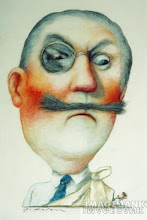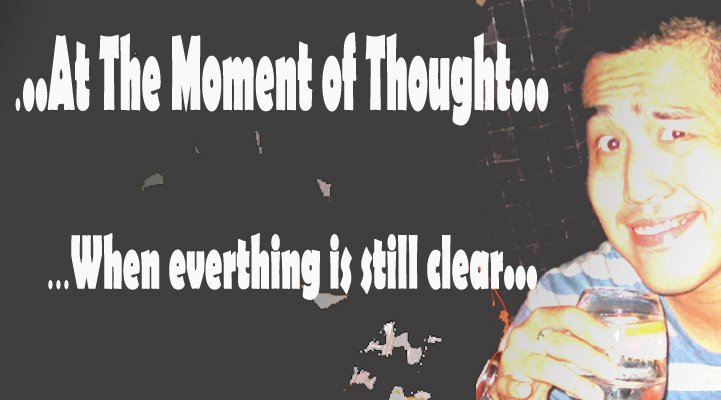Parents always resort to restrictive communication because it is the easiest to do to their children but they have forgotten the fact that every child born with a rebellious instinct. The more you push, the harder they bounced, and when that happens, it will follow them and haunts the parents until the child moves in adulthood or when the child is able to reason independently, well.
Friday, October 16, 2009
MHO:Turning Intention into Behavior…
Product endorsement has become ubiquitous among the marketers, and is believed to be able to transfer positive image of the celebrity / endorsers to product; thus creating favorable perceived image of the product among the target consumers. The question left unanswered is, “Is it effective in creating sales?”
Role model can influence the target audience in many ways. They can influence the audience psychologically such as making the audience feels the same as you feel (e.g. pride, classy, pretty etc) when using an endorsed product, and it can only happen if target segment is able to identify with the endorsers.
When the product endorsers are able to allow the audience to identify with him/her, it means they are already opening the ‘door’ in them and is readily to accept what role model has got to say. However, role model has least chance to generate a higher sales volume if the psychological effect on target consumers is not able to turn that into a behavioral pattern.
Inducing a behavioral change needs more than a psychological effect, and it is believed (at least, I believe) it requires more than just a communication (the same actually applies to any marketing communication that intends to create trial among the target consumers), it requires more than just being able to identify with the target audience.
It has actually required the product and the product endorsers to consistently convince the audience that the product can solve their problem. We must remember that when an endorser sell a product on the platform of ‘classy’, for example, it does not just mean to build awaken the consumers that they need classiness but it is actually trying to tell those who has low self-esteem that, “don’t worry. We have got just a product right for you, and you can be me”…
To be able to turn an intention into an actual behavior, the communication needs to work harder, and make sure it helps to architect the image of role model in the mind of consumer, and when consumers start to develop a favorable image on the role model, Pseudo interaction can be formed (when consumers can identify strongly with the role model). When consumers start to believe in the role model, it creates an urge to quickly turn that intention into a behavior – when that happens, you are done 80% of your work; the remaining left unattended is relying on the power of your BTL activities in pulling the consumers.
Saturday, July 25, 2009
Tuesday, February 3, 2009
MHO: Adolescent Interaction with Parents!

Reading a research piece about ‘Adolescent Interaction with parent’ has opened my eyes, I’ve learnt that many strategies are utilized in our daily communication in order to get what we want, yet we do not realize the fact that we are doing it…Sometimes, in life, we really have to step back to look at our self, we may learn more than we often do…below are the summary from the research piece I read, those are the strategies often employed by the adolescent…
- Bargaining Strategies
· Money & Material Deals (e.g. I clean the house for a week, if you buy for me)
· Money & Money Deals (e.g. I pay half, you pay half, deal?)
· Reasoning (e.g. Quality vs. Price) (e.g. just pay a bit more can last even longer, why not?)
- Persuasions Strategies
· Opinionates (e.g. all my friends laugh at me, and know it is an old shoe)
· Persistence (e.g. I want it for Christmas, yet its still 5 months away)
· Begging (e.g. please, please please, please…)
· Whining (e.g. high pitch voice to express their needs)
- Emotional Strategies
· Anger (e.g. I want it)
· Pouting (e.g. run into the room and bang the door close)
· Sweet Talk (e.g. If I look good, you will be happy too)
· Guilt (e.g. you got to give me since you buy one for sister)
- Request Strategies
· Demanding request (e.g. since you are going to grocery, get me a pair of Nike shoe please)
· Need request (e.g. I need the crayon to color my drawing)
· Want request (e.g. I want to have a pair of good shoe for my sprint competition)
Saturday, January 3, 2009
MHO: Sexual Illustration vs. Non Sexual Illustration

Using sexual illustration in an Ad works better on those who favor sexual contents; the correct recall on the brand name among those is also higher. Among those unfavorable to sexual illustrations, the recall is also high but correct brand name recall somehow lower. Using non sexual illustration, the overall correct recall is higher, both non favorable and favorable to sexual illustration. This is because consumers mind can proceed straight towards remembering or understanding the ad without distracted by any means or force of sexual icon or unnecessary icon in the ad.
Marketer needs to remember that gender of the endorsers plays an important role in brand recall. Ad that uses female endorsers will have minimum recall among male audiences because they have an initial perception of the Ad as being target to female than male thus paying less attention; similarly, Ad that uses male endorsers will have minimum recall among female. Thus, a product that target at male who consider using male model instead of female; however, female model can be used as a secondary endorsers in the ad to complement the male endorsers so that the emotional fell of romance can be created (if the product is e.g. perfume, deodorant…).
Friday, January 2, 2009
MHO: Endorsers in China

Sometimes ago, we share about choosing the right endorser for the right product, we concluded that, Product that requires emotional attachment, and involving ‘romance’ – attractiveness become an important element of the endorsers. Functional product, however, endorsers will need to have certain level of expertise and skills in the related product to be effective.
Today, I would like to share about endorsers’ match up to the product vs. Attractiveness. Often, marketers forget about the market is the important criteria in choosing the endorsers, taking China for example, the young generation as well as the middle age generation are setting the trend for celebrity endorsers; perhaps influenced by the China cultural and moral influence, Chinese emphasizes heavily on personal images, and tend to, first, judge a person by outer look.
Image is more important to them; thus, the current behavior of the
If a company decided to use endorsers who are an expert in the product category, then they must ensure the ‘expertise’ can overrule ‘attractiveness’. A win-win situation is to have someone who is an expert, at the same time well known as a celebrity, and is attractive, then it carries better influence to the market.







